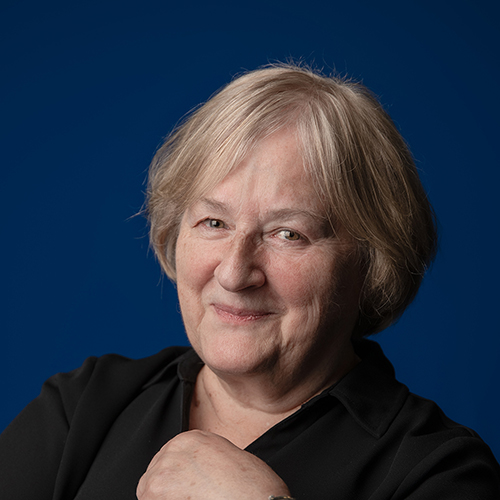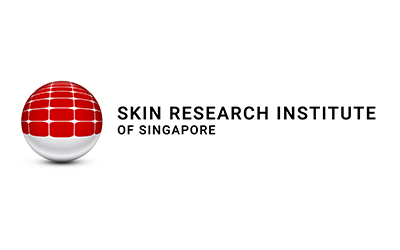Birgit Lane

A*STAR SRIS Senior Fellow
Email: birgit.lane@sris.a-star.edu.sg
Research themes: Skin Barrier, Skin Cancer, Skin Genetics, Skin Repair & Wound Healing
Biography
Professor Birgitte Lane’s research career has been distinguished for her contribution to the understanding of the structure and function of the keratin cytoskeleton, the subcellular system of nanofilamentous proteins that give tissues their resilience and strength, with special focus on the biology of the skin. She pioneered the development and use of monoclonal antibodies to keratins as markers of differentiation in health and disease, and key tools in diagnostic pathology. She established the link between keratin gene mutations and human skin fragility diseases, and led a team that identified the basis of more than 15 distinct inherited skin disorders. Her team became a central reference point in this field and a leading laboratory for generating and supplying reagents to the broader community. Her recent studies on the cellular effects of these mutations are suggesting entirely new approaches to therapy for incurable genetic skin fragility conditions. After the beginnings of her research career in London and its development in Scotland, she went on to establish a third successful research team in Singapore. She brought her research programmes on skin cancer and rare genetic skin diseases to the Centre for Molecular Medicine, later the Institute of Medical Biology and now the Skin Research Institute of Singapore, and these programmes formed the start of the growth of skin research in Singapore. She continues to be seen as a thought-leader in her field and is in demand as a speaker at international conferences. She has trained and mentored several internationally prominent scientists including Professor Xin Lu FMedSci (Director, Ludwig Institute, Oxford) and Professor Irwin McLean FRS FMedSci (Univ. Dundee).
In parallel to her research activities, Birgit Lane has played a key role in the international scientific community through her work with significant research evaluation and strategy committees (UK’s Research Assessment Exercise, Wellcome Trust, Lister Institute, Cancer Research UK, and professional societies such as the British Society for Cell Biology) and led the development of research institutions in the UK and Singapore. She played a key role in establishing the Wellcome Trust Biocentre at the University of Dundee and led the formation of the Division of Cell and Developmental Biology at the University of Dundee in the 1990s. Coming to Singapore in 2005, she joined A*STAR to help build the Biomedical Sciences initiative, founding A*STAR’s Institute of Medical Biology in 2007, followed by the Skin Research Institute of Singapore in 2013. She headed IMB for 12 years and developed it into one of Singapore’s most successful research institutes with a strong international reputation. She subsequently led IMB’s evolution to SRIS, which is now widely seen as the strongest translational skin research cluster world-wide. Beyond A*STAR, she established an academic society for skin research in Singapore, the Skin Research Society (Singapore), and helped establish a patient advocacy group, Debra Singapore, with whom she works for the patient community affected by epidermolysis bullosa.
Research interests
Epithelial cells grow as sheets, covering our bodies and lining the spaces and organs inside. These cells are incredibly strong due to their internal keratin filament networks. Mutations in keratins lead to fragile skin (EBS, or "butterfly children"). Working with dermatologists, this research group studies the far ranging pathological consequences of keratin mutations - from cell stress to potential cancer susceptibility - to see how these diseases can best be identified and their severity reduced.
Keratin filament proteins of the cytoskeleton play an important part in promoting, defining and maintaining epithelial differentiation and function. Epithelia are sealed sheets of polarised cells that line spaces and enclose organs and maintain large functional differences across the sheet. Keratin filament protein networks cross the cytoplasm of epithelial cells, link into anchorage junctions around the edges and providing the physical resilience for epithelial tissues to withstand normal wear and tear. Mutations in keratins lead to inherited tissue fragility disorders such as EBS, and recent data from this lab and others suggest that part of this fragility arises from the stress signals originating from mutant protein accumulating in cells.
Epithelial cells sense mechanical stress in many natural situations. Tissue stretching occurs normally in bladder and lungs, and more slowly in growth or development; upon ischemia, mechanical stress arises from hypotonic cell swelling. How do cells sense, resist and respond to such mechanical changes? The keratin filament system is well placed to relay changes in tissue tension that impact on cell behaviour in development, growth, wound healing and cancer. We collaborate with clinicians and engineers to stress cells and analyse their response, looking for points at which intervention can provide new targets for disease therapies.
Current projects in the lab include (i) mechanical signaling in keratinocyte wound activation; (ii) therapeutic strategies for keratin disorders; (iii) susceptibilities to non-melanoma skin cancer; (iv) post-translational regulation of keratin filament proteins; (v) genetic mechanisms underlying skin disorders. The lab has also established a renowned knowledgebase, the Human Intermediate Filament Database.
A*STAR celebrates International Women's Day

From groundbreaking discoveries to cutting-edge research, our researchers are empowering the next generation of female science, technology, engineering and mathematics (STEM) leaders.
Get inspired by our #WomeninSTEM
